I can’t recall how many dumplings I have plumped, crimped and eaten over the past few weeks. Lately, the orderly act of making dumplings has felt necessary and as mandatory as my morning cup of black coffee. This experience in the kitchen has felt cathartic, purifying, and most of all, comforting.
Dumplings are my comfort food in every way. As a child, we rarely ate them at home. For me, they represent Sunday mornings in Australia where I grew up, when our family would dress in our Sunday best, pile into our orange Ford Falcon, and drive through suburban Sydney, passing through many multicultural neighborhoods where the Greeks, Italians, Lebanese and Vietnamese had settled, before finally reaching the city. I can’t remember one Sunday when arriving at Chinatown didn’t feel exciting. Walking up Dixon Street, the main thoroughfare through Sydney’s ebullient Chinatown, always gave me goosebumps. Even as a kid growing up in a strictly Chinese household in Australia, I still felt like an outsider here. I spoke Cantonese but never with the same fluency or panache as that kid next to me. Yet, when we stepped into our favorite Chinese restaurant, Nine Dragons, my cultural conviction would return. Here, I felt confident and brave. Dumplings—and the loud, clanging, disorderly world around them—represented family, familiarity and comfort.
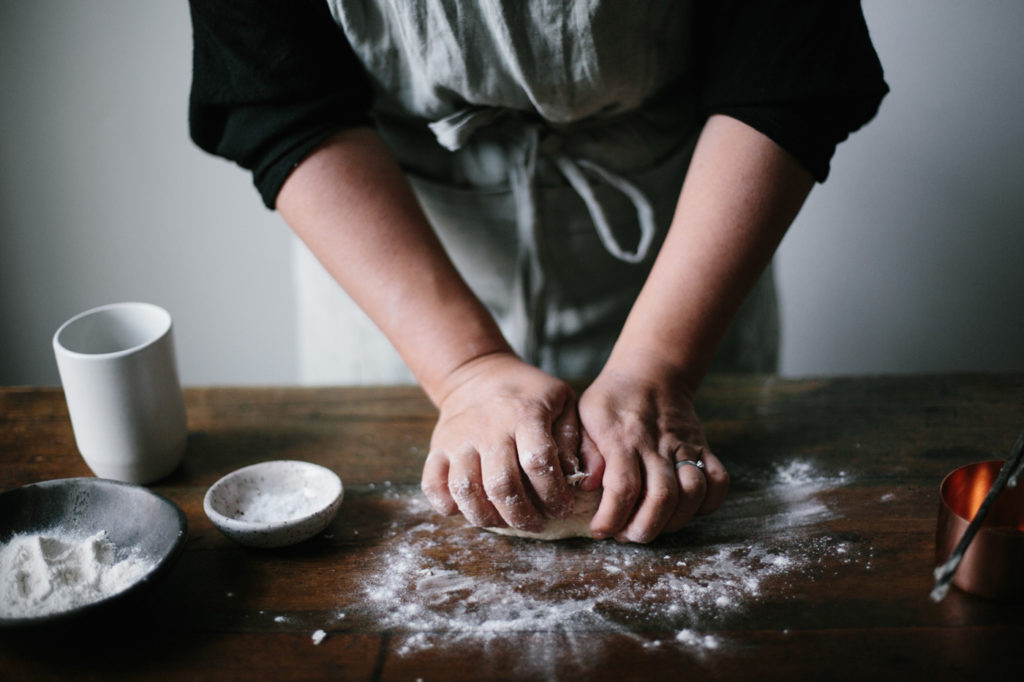
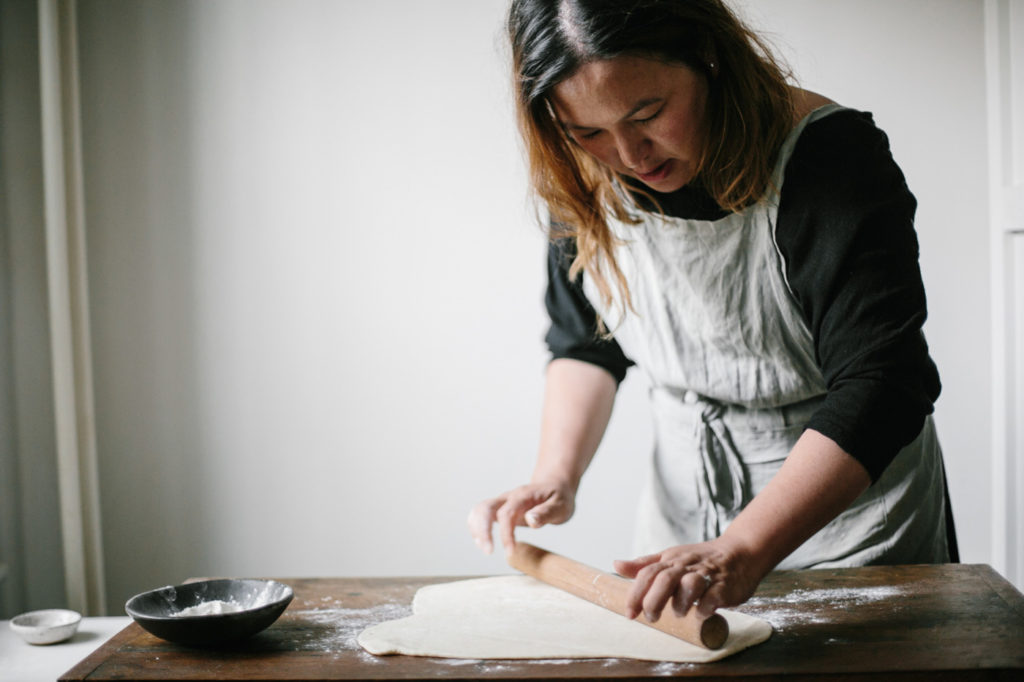
As the great Ina Garten has said, “Food is not about impressing people. It’s about making them feel comfortable.” And the food that makes us feel the most comfortable are the dishes that make us feel connected to a person or memory. Memories of food are powerful triggers of emotions and feelings; eating comfort food can cure a lonely heart.
Last November, when my political hopes turned bitterly sour, I retreated to Chinatown. I spent days walking down busy Hester Street in Manhattan, where Chinese elders bickered over games of chess in the park and practiced tai chi in the crisp autumn air. I took refuge in a Chinese food court, purchasing roast meats for my kids like my mother used to do. And at home, in the safety and refuge of my own kitchen, I started cooking more of the foods that made me feel better. I turned to noodles, soups, rice, dumplings and all the foods that reminded me of my childhood. Making dumplings became my way of finding balance in the turmoil of disturbing daily news cycles.
Foods that comfort are intensely personal. Dumplings are my comfort food, not because they are delicious (which they are, of course), but because I associate them with a happy memory. Eating them fills me with nostalgia, and sentimental yearning for childhood, the feeling of safety, home and fearlessness. And when I asked friends from around the world about their own comfort foods, responses were diverse and multicultural, but all equally heartwarming.
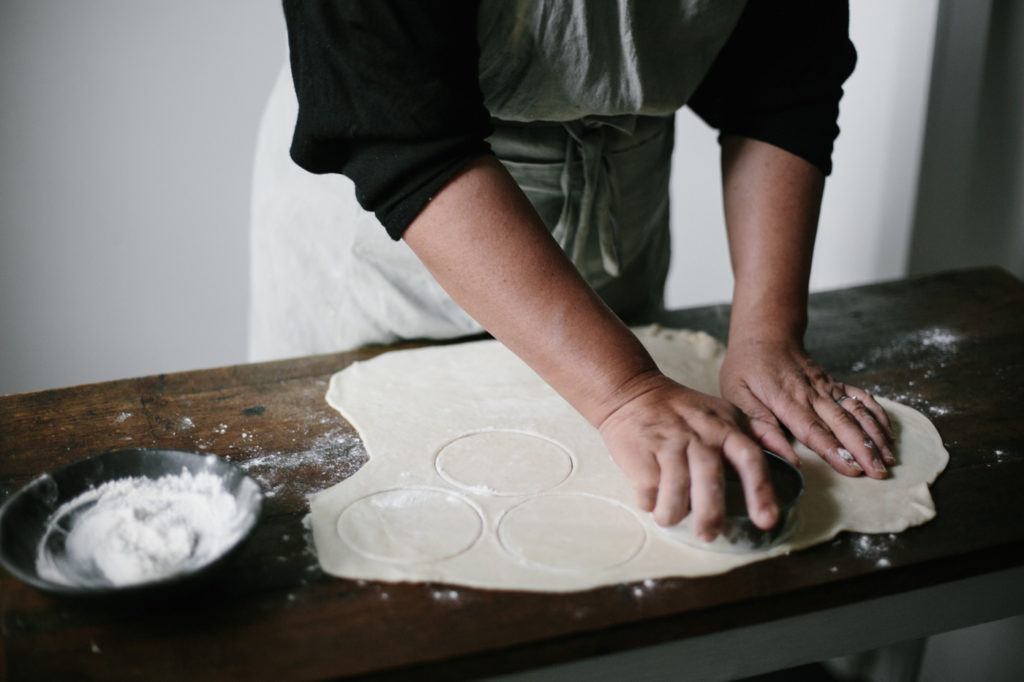
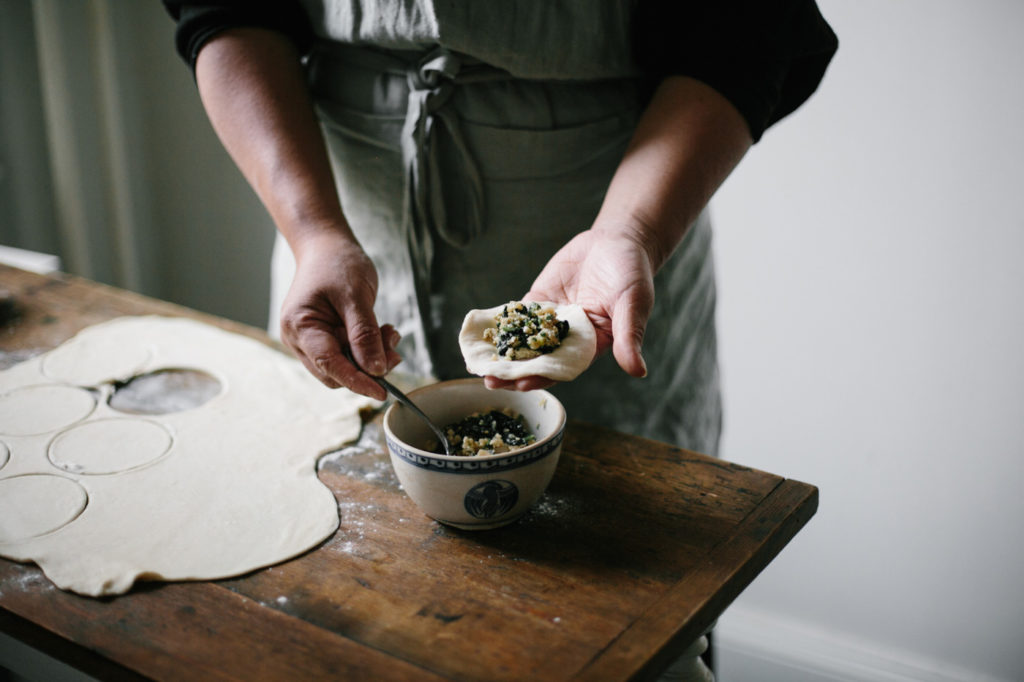
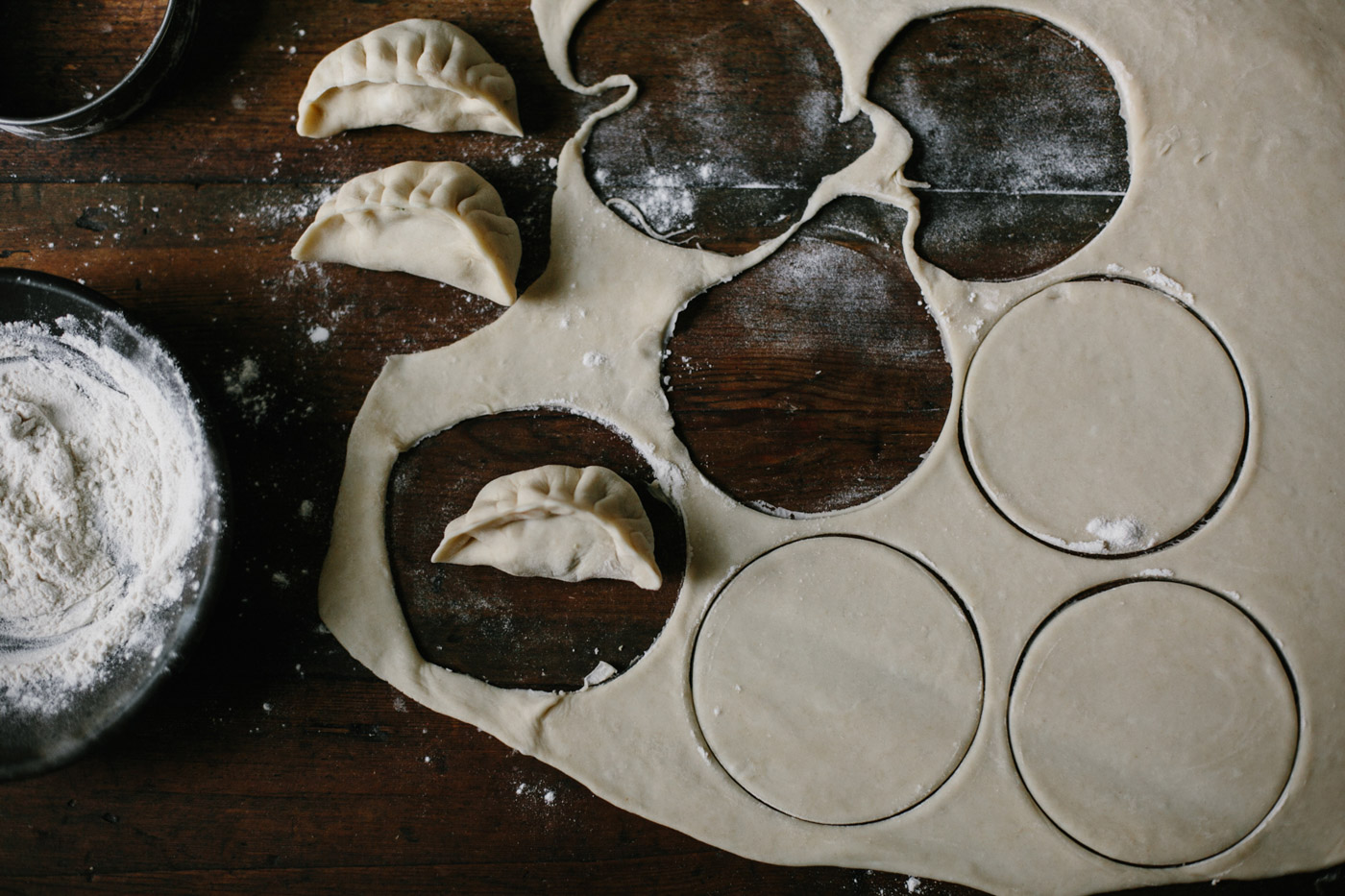
“Kimchi jjigae is a spicy kimchi stew that I grew up on. My mom used to make it for me all the time, and to this day when I go back to visit her, it’s the first dish she cooks for me when I arrive and the last dish she sends me off with when my visit is over. I crave it incessantly. And whether I make it for myself or order it at any and every Korean restaurant I go to, it always signals home for me.”

CC Malerba
From San Francisco Bay Area, now residing in Brooklyn, New York
——
“Scrambled-egg sandwich. Just very softly scrambled eggs, ample mayo, dash of salt and pepper, and white fluffy bread, the way my mom used to make for me as a kid. She always served it with a cold glass of Ovaltine.”

Linsey Laidlaw
From Las Vegas, now residing in Brooklyn, New York
——
“For me, it’s anything with savory cream-based sauce. When I first started to cook, back in the college days, French food was considered the ‘fancy’ dinner party food to serve. Think cream with white wine and shallots, chicken cordon bleu, mac and cheese with four-cheese béchamel, or chicken in a creamy tarragon or herby bearnaise. Savory plus cream equals still represents all that is good in the world!”

Dimity Jones
From Tamworth, Australia, now residing in Brooklyn, New York
——
“My comfort food is soup. My mother-in-law makes this soup from Thanksgiving leftovers. It has the turkey and gravy in it and she makes this beautiful broth and adds brown rice. We freeze it and have it throughout the winter months. When we heat it up the entire house smells like Thanksgiving. It’s wonderful!”

Adrienne Voboril
From Mill Valley, California, now residing in Brooklyn
——
“Pastina with butter and parmigiana reminds me of being a child in Italy.”

Davida Sweeney
From Marbella, Spain, now residing in Sydney, Australia
——
“My mom would make lentil soup often in the colder months, and it was so good and comforting. Especially when she added hot dogs to it!”

Jodi Moreno
West Village, New York
——
“Cháo gà (chicken congee) was one of my favorite dishes growing up. The night I landed in New Jersey, my aunt coincidentally made a huge pot of chicken congee for me to eat for dinner. She soon discovered my love for it, and now she often makes it for me when I come back to visit. Chicken congee just reminds me of home. It reminds me of my mum and my aunt and how lucky I am to have their love and support.”

Shirley Cai
From Sydney, Australia, now residing in New York, New York
——
“My comfort food is fish rice (Portuguese version made with onion, garlic, tomato and coriander; it’s something between a soup and the Spanish paella you may know), because it was the dish my mother made when my brother and I were studying outside our hometown. She used to buy fresh fish in the market and made this aromatic and delicious version of it. It was not just a meal; it was the ritual of going into the market, and talking with the fish women selling it. I was lucky to get the recipe from her. Now every time I go to Portugal, I make this for my brother and he usually says, ‘You cook it just like mum did.’”

Maria Midoes
From Nazaré, Portugal, now residing in Brooklyn, New York
——
“In the last few months, we have started cooking a good old fashioned British Sunday roast dinner. I don’t think it’s a coincidence that we have suddenly started doing it during such an unsettling time. For me it represents family, friends and the comfort of my faraway home.”

Joanne Solomon
From Swansea, Wales, now residing in Brooklyn, New York
——
“My comfort food is spaghetti and meatballs with garlic toast. It warms me up and reminds me of eating dinner with my parents, brother and sister when I was a child.”

Lisa Collins
From Oregon, now residing in Brooklyn, New York
——
“My mom is a farm girl who was baking desserts for her five brothers and sisters and the farmhands at a very young age. Every day I came home from school to homemade cookies, cake or—the Midwestern classic—bars!”

Sara Woster
From Minnesota, now residing in Brooklyn, New York
——
“Porridge, cooked on the stove with milk and honey, which my mum used to make for me when I was sick.”

Sam Hillman
From South Coast NSW, Australia, now residing in Brooklyn, New York
——
“My grandfather took my brother and I for french fries every Sunday afternoon when we were little. These times were filled with laughter—sometimes side-splitting. He adored us, and looked forward to these outings I think more than we did.”

Jill Fergus
From Long Island, now residing in TriBeCa, New York
——
“A simple lentil soup with rice would do the trick. It was one of the dishes my grandmother would have waiting for us when we came back from school.”

Leetal Arazi
From Tel Aviv, Israel, now residing in Brooklyn, New York
Comfort food is not fancy or complicated. Its roots are humble, stemming from family and home. Across the world today, we see people on social media, and friends in the real world, turning to comfort food to heal pain—political or otherwise. Baking is on the rise, dinner parties have taken on new relevance, and the kitchen has become the small place in this vast world where we feel safest and most powerful. During hard times, food and memory become our sharpest weapon against isolation and affliction. Comfort food trumps all.
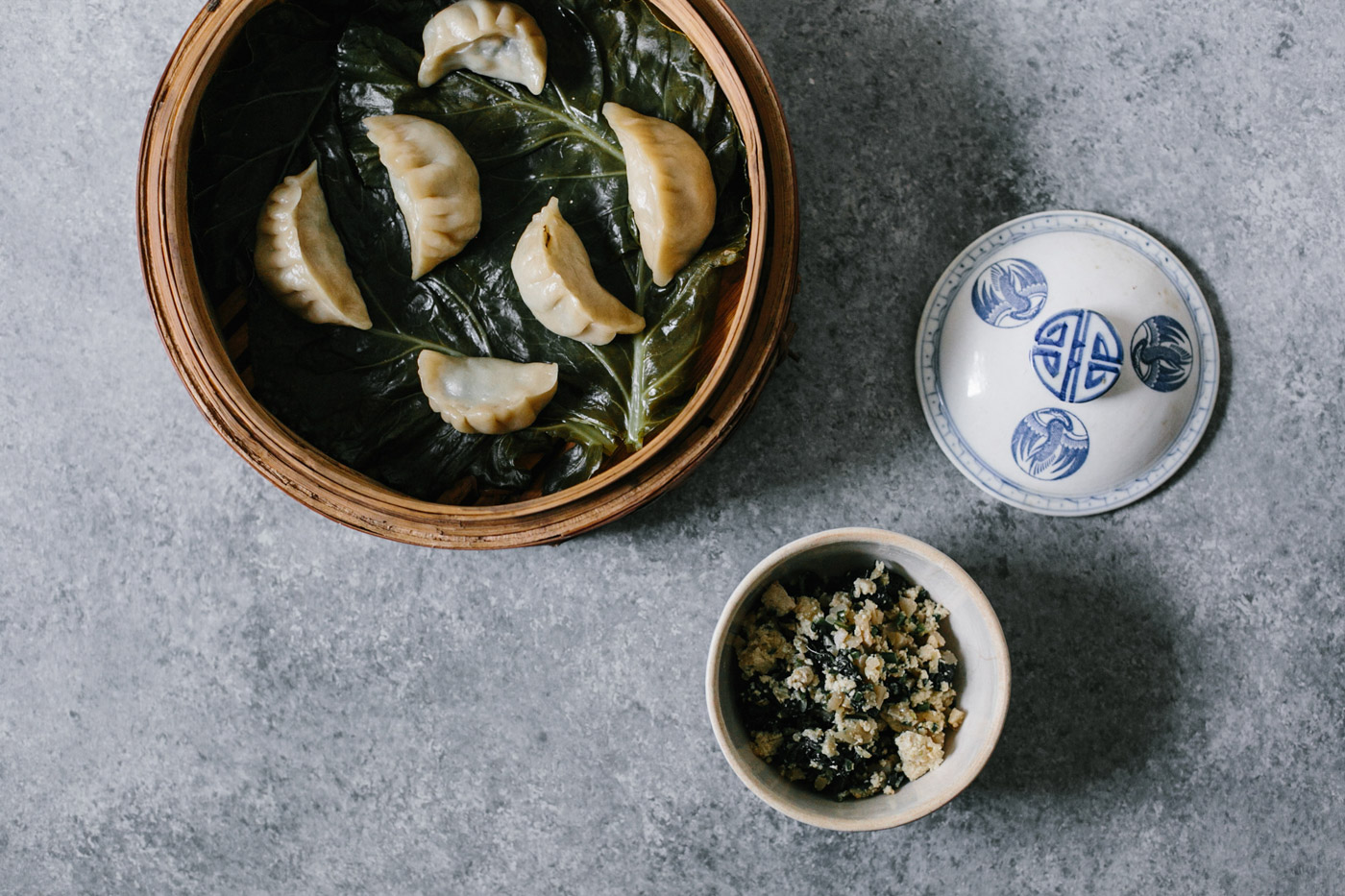
RECIPE
Spinach & Garlic Chive Dumplings
This recipe combines my two favorite dumplings at Dim Sum: spinach and garlic chive. This hot water dumpling dough is incredibly easy to work with. The just-boiled water breaks down the gluten, producing a resilient dough that doesn’t bounce back when rolled, and stands up well to pan-frying and steaming. You can choose to cook these dumplings either as pot stickers or steamed. I have included instructions for both methods.
Ingredients
Filling:
Makes about 20 dumplings
- 2 tsp. sesame oil
- 1 clove garlic, finely chopped
- ½ inch piece of ginger, finely chopped
- 4 cups (200 grams) baby spinach leaves, tightly packed
- 2 ounces (60 grams) firm tofu, crumbled
- 3 ounces (90 grams) water chestnuts, finely chopped
- ⅓ cup garlic chives, finely sliced
- 2 tsp. tamari
- Sea salt and white pepper
- 2 tsp. potato starch (or cornflour)
- 1 tsp. white sesame seeds, toasted
Wrapper:
Makes about 20 to 25 3 ½-inch (9 centimeters) round dumpling wrappers
- 2 cups (10 ounces) unbleached all-purpose flour
- About ¾ cup just-boiled water
- ½ teaspoon salt
Directions
Filling: Heat a medium sized skillet on medium-high and add oil, garlic and ginger. Saute for 30 to 60 seconds until fragrant.
Add spinach leaves and cook until the greens are wilted, about 60 seconds. Stir through the tofu, water chestnuts and garlic chives. Season with tamari and a big pinch of sea salt and white pepper.
Remove from heat and add potato starch (this helps to absorb excess moisture).
Fold through the sesame seeds.
Wrappers: Add the flour and salt into a large heatproof bowl (resting on a tea towel to prevent the bowl moving around) and make a well in the center. Using wooden chopsticks (or wooden spoon), stir the flour as you add the water in a steady stream until the flour is lumpy. Using your hands (be careful, the dough will be hot), knead the dough in the bowl until the mixture comes together. Transfer the dough to a lightly floured benchtop and knead the dough for about 2 minutes until smooth and elastic. Wrap the dough in plastic wrap or place in a ziplock bag, and allow it to steam in the plastic for 30 minutes to 2 hours.
Lightly dust your work surface again. Roll out your dough as thin as you can (about ⅛ inch is great). Using a floured 3.5-inch cookie cutter, cut out rounds and cover them with a damp cloth. Re-roll any dough offcuts and cut out more dumpling wrappers.
To wrap: Place some filling in the middle of a wrapper and fold over. Pinch together one corner and working from one corner to the other, pleat just one edge of the wrapper, sealing as you go. Alternately, you can crimp both edges as you wish. Find your own style. When you have sealed all the way, shape into a neat crescent shape.
Place your dumplings on a baking sheet, lined with baking paper, and cover with a cloth. If you don’t want to cook immediately, freeze them in a single layer, and then remove from baking sheet and store frozen dumplings in ziplock bag. They can be pan-fried or steamed from frozen, without thawing.
For Potstickers: Heat a large skillet on medium, drizzle 1 teaspoon of sunflower oil (or other neutral oil) and, once hot, place a few dumplings to the skillet, making sure to space them out so they don’t stick together. Leave them to cook on one side for 1-2 minutes, until the underside is slightly golden. Very carefully add ¼ cup of water into the skillet and immediately cover with a lid. Reduce heat to low and allow the liquid to boil and sizzle for another 2-3 minutes. The potstickers are ready when all the liquid has evaporated and the dumpling skin is puffed up. Remove from the pan immediately and continue cooking the rest of the dumplings.
For steamed dumplings: Line a steaming basket with cabbage or baking paper. Arrange the dumplings in the basket, spacing them out so they don’t stick together. Bring a medium pot of water to the boil and place the basket on top of the pot. Cover and steam for 10-12 minutes, until the wrappers are puffed up. Repeat until all the dumplings are cooked.
Spicy Dipping Sauce
- 2 tsp. tamari
- 2 tsp. rice vinegar
- ½ tsp. sugar
- 1 small bird’s eye chilli, seeded and finely chopped (or 1 tsp. red chilli flakes)
- 2 tsp. sesame oil
- 1 scallion, finely chopped
Whisk together all the ingredients and serve with dumplings.

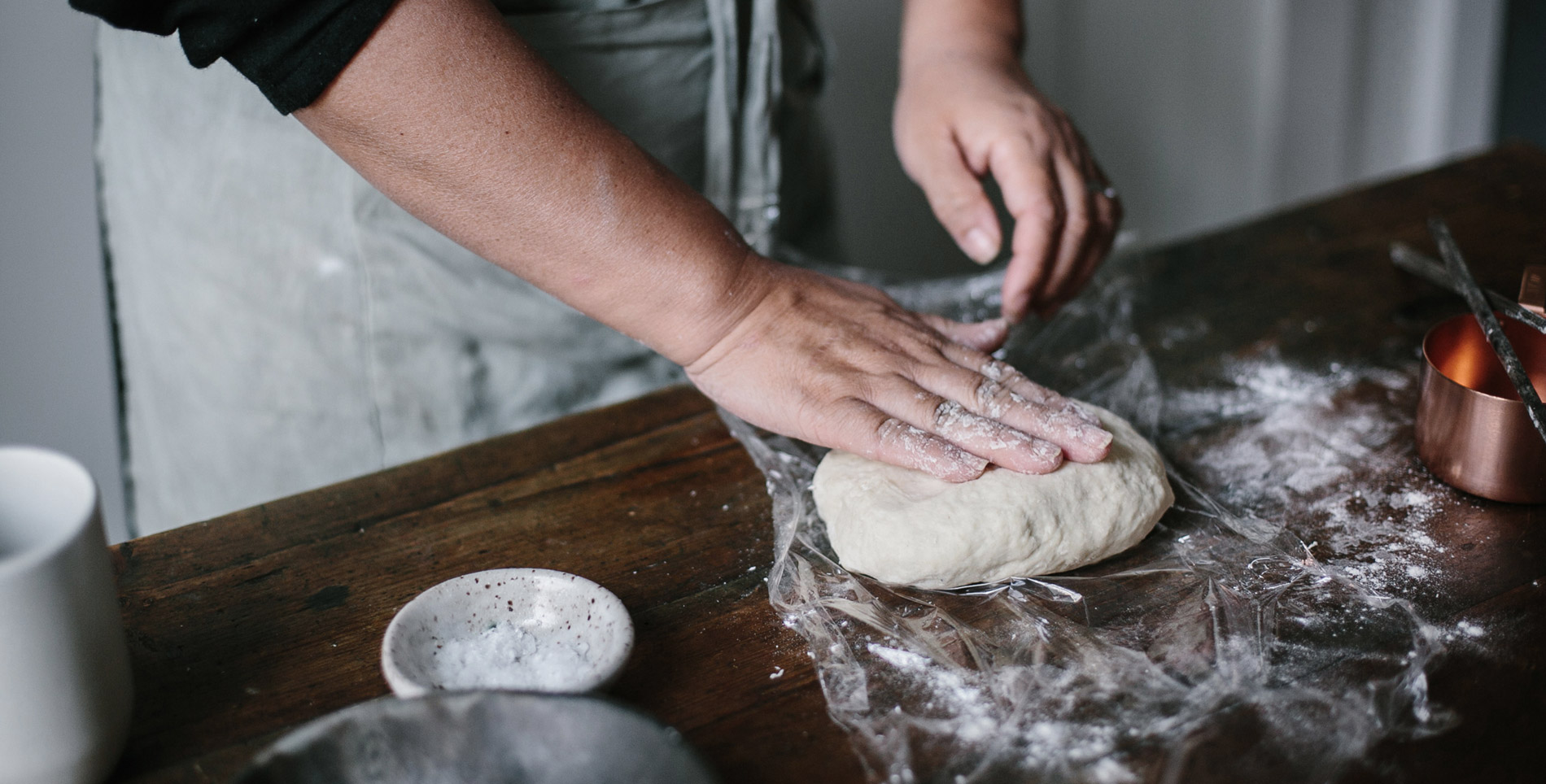

Our comments section is for members only.
Join today to gain exclusive access.